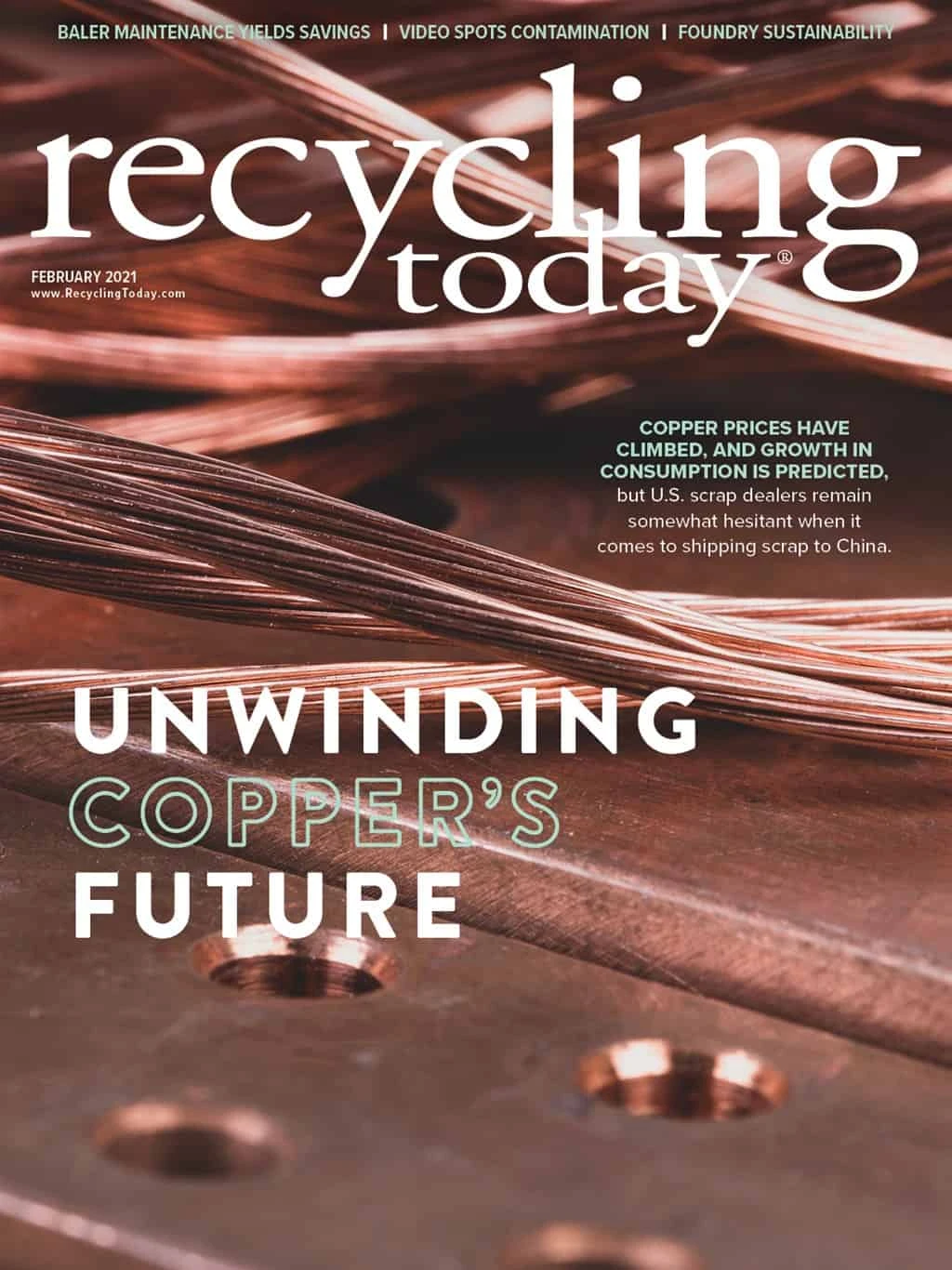Ferrous scrap prices have been climbing since November, with the prompt industrial composite price reaching a U.S. average of $499 per ton in January, according to the Raw Material Data Aggregation Service (RMDAS) from Management Science Associates. This was a gain of $186 from November 2020. Rising ferrous scrap prices tend to draw out nonferrous scrap, too, but higher aluminum and copper scrap prices also deserve some of the credit.
London Metal Exchange’s (LME’s) copper cash settlement price Jan. 15 was $7,979.50, compared with $6,231 one year earlier, while the aluminum alloy price was $2,000.50 Jan. 15 compared with $1,778 the previous year.
“As pricing has increased, so has the volume of scrap available,” Randy Goodman, vice president of the brokerage firm Greenland (America) Inc., Roswell, Georgia, says. “I’m pretty amazed at how much red metal scrap was available when the markets took a jump” in late 2020.
“High commodity prices should keep the nonferrous metals flowing in, and we feel business momentum will continue to grow with pent-up demand from manufacturers and consumers.” – Mitchell Goldberg, CEO of Northeast Metal Traders
Mitchell Goldberg, CEO of Northeast Metal Traders in Philadelphia, says copper scrap is flowing well in historical terms. However, he adds, “There seems to be a cash crunch for a number of our suppliers, leading them to focus less on traditional pricing considerations and more on the quickness of payment terms.”
A trader whose company has processing operations in the Midwest and Southeast says supply and demand have been “spotty.” Regarding demand, he adds, “It depends on the day. Some consumers are in and out of the market very quickly. Others are consistently strong, and others are consistently out. It’s the same with export.”
While most domestic buyers of copper scrap are in the market, he says they are conservative in their buying. “With the market run-up, they are working down their inventories and keeping deliveries to just in time,” the trader says.
Yet many mills are full and not taking deliveries until late February or early March, Goodman adds.

“Most places are already full for February,” the trader for the company with operations in the Midwest and Southeast says as of mid-January. “We’re selling March already. We sold February in December or the beginning of January. It’s perpetually further and further out.”
He says aluminum scrap supply seems tighter than that for copper scrap, and he predicts that it will get tighter.
The trader says primary mills are more aggressive than secondary producers in terms of pricing and demand, with spreads tightening. Delivery appointments are readily available with mills, he adds.
Michael Diehl, a senior vice president based in Southern California for Coremet Trading Inc., based in New York City, also mentions strong demand for secondary aluminum grades. “Auto sales are surprising automakers that are short” on inventory because of shutdowns related to the pandemic in the early part of 2020.
Goldberg says supplies from scrap dealers were severely reduced early in the pandemic but are now approaching prepandemic levels. “We are readily able to sell our metal, but transportation restrictions make production and scheduling more difficult than we’ve ever experienced before. High commodity prices should keep the nonferrous metals flowing in, and we feel business momentum will continue to grow with pent-up demand from manufacturers and consumers.”

Explore the February 2021 Issue
Check out more from this issue and find your next story to read.
Latest from Recycling Today
- Orion ramping up Rocky Mountain Steel rail line
- Proposed bill would provide ‘regulatory clarity’ for chemical recycling
- Alberta Ag-Plastic pilot program continues, expands with renewed funding
- ReMA urges open intra-North American scrap trade
- Axium awarded by regional organization
- Update: China to introduce steel export quotas
- Thyssenkrupp idles capacity in Europe
- Phoenix Technologies closes Ohio rPET facility





